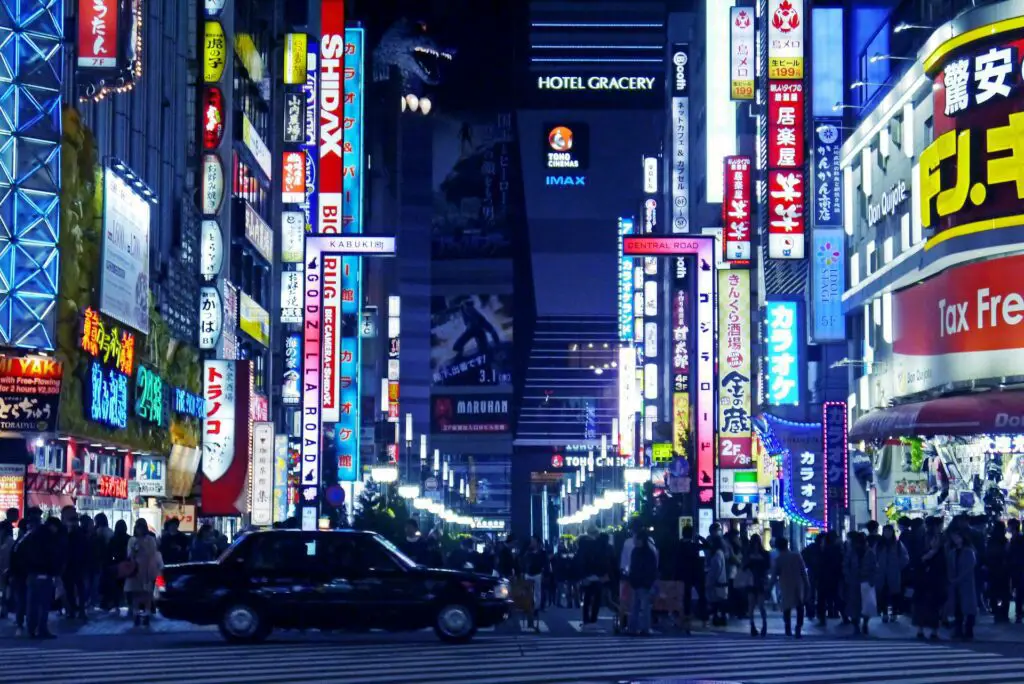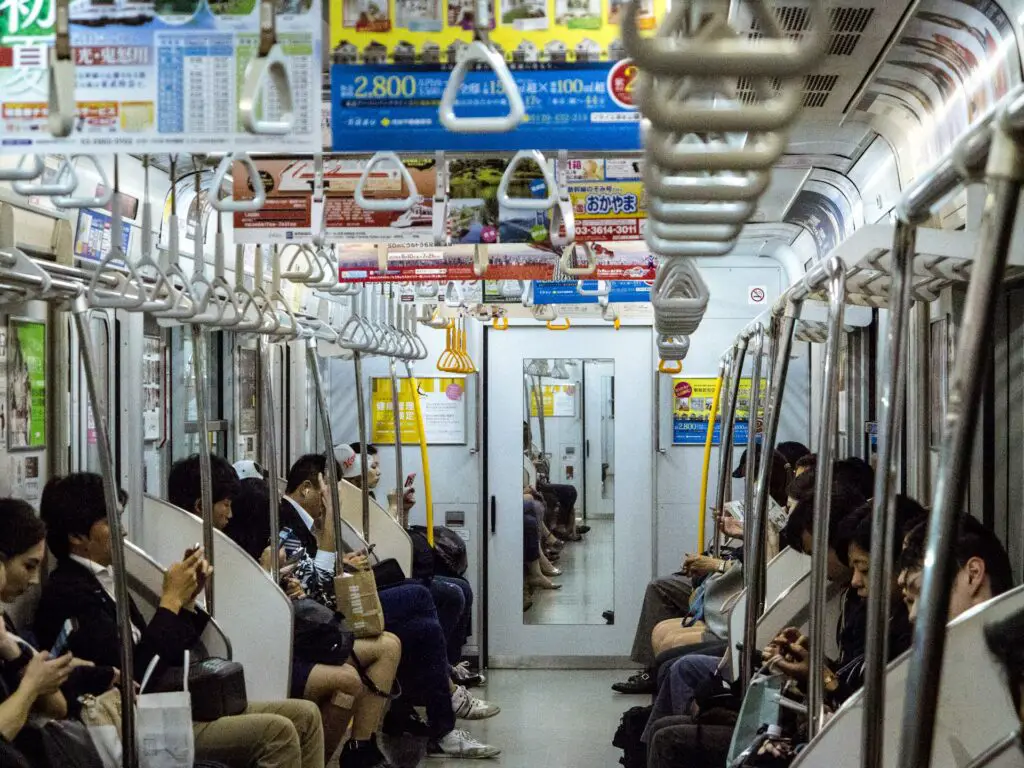Traveling from Michigan to Japan has never been easier. With nonstop flights now connecting Detroit Metropolitan Airport (DTW) to Tokyo’s Haneda Airport (HND), planning a trip to Japan is far more convenient than in years past. This direct route cuts down on travel time, eliminates long layovers, and allows for a smoother arrival into Tokyo’s city center.
For Michigan travelers—whether heading to Japan for business, leisure, or family visits—Haneda’s close proximity to downtown Tokyo is a major advantage over Narita Airport, which sits much farther outside the city. This post offers a practical guide to navigating your flight, choosing where to stay, finding iconic local dishes, and staying connected once you land.
Flight Information: Detroit to Tokyo Haneda

Delta Air Lines operates a regular nonstop service between Detroit to Tokyo Haneda. The flight typically takes around 13 hours eastbound and slightly longer returning west due to prevailing winds. Flights generally depart from the McNamara Terminal and land at Haneda’s international terminal, offering an easy transition to Tokyo’s local rail and subway systems.

This nonstop route is part of Delta’s transpacific network and is one of the few direct gateways from the Midwest to Japan. Booking early—at least three to four months in advance—is recommended for the best fares. Peak travel seasons, such as cherry blossom season (late March to early April) and the autumn foliage period (October to November), tend to fill quickly.
Booking Tips:
- Look for fare deals in late January, February, and early September.
- Consider premium economy for the long-haul comfort without the business class price.
- Enroll in SkyMiles to earn rewards and qualify for upgrades.
Travelers who value time and access will benefit from flying into Haneda rather than Narita. Haneda is only about 30 minutes from central Tokyo by train or taxi, compared to up to 90 minutes from Narita. For those planning to jump into sightseeing or meetings shortly after landing, this time savings is substantial.
Where to Stay in Tokyo

Tokyo offers a wide range of lodging options that fit any budget or travel style. First-time visitors often benefit from staying near major train lines for easy access to attractions across the city.
Best Districts for Visitors:
- Shinjuku: A central transportation hub with high-rise hotels, shopping, and vibrant nightlife. It’s ideal for first-timers who want convenience and energy.
- Shibuya: Popular among younger travelers, Shibuya offers stylish hotels near the famous scramble crossing, youth fashion districts, and late-night dining.
- Asakusa: For travelers interested in traditional Japan, Asakusa offers a quieter, more historic experience near the iconic Sensoji Temple.
- Ginza: Known for luxury shopping and upscale accommodations, Ginza is a polished and quiet base for those seeking comfort and proximity to Tokyo Station.
Recommended Hotels:
- Budget:
- APA Hotel Shinjuku Gyoen-mae – Clean, compact rooms and excellent locations under $100/night.
- Tokyu Stay Shibuya – Extended-stay comfort with in-room washers and small kitchenettes.
- Mid-range:
- Hotel Gracery Shinjuku – Known for its “Godzilla Room” and excellent access to transit.
- Mitsui Garden Hotel Ginza Premier – Great skyline views with polished amenities.
- Luxury:
- Park Hyatt Tokyo – Featured in “Lost in Translation,” offers luxury with iconic Mount Fuji views.
- Conrad Tokyo – Overlooking Tokyo Bay, with world-class dining and spa services.
Most hotels include Wi-Fi, but not all provide easy mobile connectivity off-site. That’s why choosing lodging near a major train line or station is crucial—it saves time and hassle when getting around.
Must-Try Regional Dishes in Tokyo and Beyond

Japan’s food culture is one of the biggest draws for international visitors, and Tokyo is the heart of it. From street stalls to Michelin-starred counters, the capital delivers an unmatched culinary experience. Depending on your ticket class, the Detroit to Tokyo Haneda flight my include an opportunity to same Japanese cuisine.
Tokyo Specialties:
- Edomae Sushi: Traditional Tokyo-style sushi that originated in the Edo period. Try it at mid-range chains like Sushi Zanmai or splurge at Sukiyabashi Jiro (reservations required).
- Tsukemen: A thicker noodle served separately from a concentrated dipping broth. Menya Musashi and Rokurinsha are popular options.
- Monjayaki: A runnier version of okonomiyaki cooked tableside on a griddle, common in the Tsukishima district.
Regional Dishes Worth Seeking Out:
- Yokohama (30 minutes south):
- Chinatown offers Nikuman (steamed meat buns), gyoza, and unique Japanese-Chinese fusion dishes.
- Hakone (90 minutes west):
- Sample kuro tamago (black eggs boiled in volcanic hot springs). Legend says eating one adds seven years to your life.
- Osaka (via Shinkansen bullet train):
- Known for takoyaki (octopus balls) and okonomiyaki (savory pancakes). A food-lover’s paradise with a casual, friendly vibe.
Tokyo’s dining options range from ¥1,000 ramen joints to ¥30,000 omakase dinners. Plan to mix street food experiences with sit-down meals to fully appreciate the diversity of Japanese cuisine.
Getting Around: Transit Basics

Tokyo’s public transit system is one of the most efficient in the world, but it can be confusing for first-time visitors. Understanding how to move through the city can save both time and stress.
IC Cards: Suica and Pasmo
- Suica and Pasmo are rechargeable smart cards used on trains, buses, and even vending machines.
- Available at airport kiosks, JR stations, and convenience stores.
- Tap to enter and exit the transit gates—no need to buy single tickets.
- Cards are interchangeable across most major cities in Japan, including Kyoto, Osaka, and Yokohama.
Tokyo Metro vs. JR Lines
- Tokyo Metro is a subway network that serves central neighborhoods.
- JR Lines like the Yamanote Line loop around the city and are included if you have a Japan Rail Pass.
- When in doubt, Google Maps and the “Japan Travel by Navitime” app both show real-time routes and fare prices.
Should You Get a Japan Rail Pass?
- For trips limited to Tokyo and surrounding areas, a JR Pass may not be worth the cost.
- If you plan to visit Kyoto, Hiroshima, or Sapporo within seven to 14 days, it can save significant money.
- Passes must be purchased before arriving in Japan and can be activated at Haneda’s JR East Travel Service Center.
A tip for new travelers: trains are rarely late, and people queue politely. Have your IC card ready, and avoid phone calls or loud conversations while riding.
Staying Connected: Internet, SIM Cards & Wi-Fi

Internet access is essential for navigating Tokyo, translating menus, and communicating with home. Japan offers multiple options depending on how long you’ll stay and how many devices you need to connect.
SIM Card Options at Haneda
- Visitors can purchase prepaid SIM cards right at Haneda Airport after clearing customs.
- Options include SoftBank, NTT Docomo, and IIJmio. Look for kiosks or vending machines near arrival areas.
- Standard packages:
- 7-day SIM with 3–5GB data: around ¥2,500–¥3,000
- 14-day unlimited data SIM: around ¥4,000–¥5,500
- Bring an unlocked phone that supports Japanese frequency bands.
eSIM for Compatible Phones
- eSIM options like Airalo or Ubigi allow digital setup before you even land.
- Best for iPhones (XS or later) and Google Pixel 4 or newer.
- Activation typically takes minutes with no physical SIM swapping needed.
Pocket Wi-Fi Rentals
- Pocket Wi-Fi devices offer unlimited data and can connect multiple devices at once.
- Rental companies like Ninja WiFi or Japan Wireless offer airport pickup and return.
- Good option for families or groups, but requires charging and returning the unit before departure.
Free Wi-Fi Access Points
- Found at most 7-Eleven, FamilyMart, and Lawson convenience stores.
- Starbucks, McDonald’s, and many train stations also offer free Wi-Fi.
- Consider downloading the “Japan Wi-Fi Auto-Connect” app to automatically join supported networks.
Whether you prefer a personal SIM card for Japan or a shared hotspot, staying online in Japan is easy if you plan ahead. Don’t rely solely on public Wi-Fi—have a backup to avoid getting stuck without access when it matters most.
Cultural Tips for First-Time Visitors

Japan is orderly, clean, and highly respectful—but also operates with customs that may be unfamiliar to American travelers. Knowing a few basics will go a long way.
Social Etiquette
- Shoes off indoors: Be prepared to remove your shoes when entering homes, temples, and some restaurants.
- Politeness matters: Bowing is a common greeting. Avoid loud conversations in public, especially on transit.
- Cash culture: Many small businesses still don’t accept credit cards. Carry cash—ATMs in 7-Eleven are foreign card-friendly.
Konbini (Convenience Stores)
- 7-Eleven, FamilyMart, and Lawson are everywhere and offer freshly made meals, drinks, ATMs, and daily essentials.
- Hot coffee, prepackaged sushi, and onigiri (rice balls) are reliable, inexpensive meals on the go.
Tipping
- Tipping is not customary in Japan and can even be considered rude. Exceptional service is already included in the price.
Making the Most of Your Japan Trip
With nonstop flights from Detroit to Tokyo Haneda, Michigan travelers have a direct gateway into one of the most exciting cities in the world. Choosing the right neighborhood to stay in, trying Tokyo’s iconic dishes, and understanding how to stay connected can make your trip smoother and more enjoyable.
Plan early, stay flexible, and don’t stress about knowing everything before you land—Japan rewards curiosity and courtesy. Whether it’s your first time or a return visit, you’ll come back with unforgettable experiences (and probably a suitcase full of snacks).




